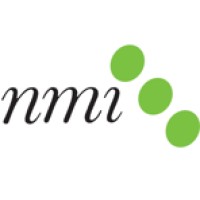The Farm Data Model (FDM) is an open-source project designed to empower data-driven decision-making in agriculture. By providing a standardized, flexible, and extensible schema for organizing and analyzing farm data, FDM enables seamless data integration, analysis, and ultimately, improved farm management practices and lowering environmental impact.
- Standardized Schema: FDM's core strength lies in its robust, well-defined schema. This structure ensures consistency and interoperability, allowing diverse agricultural data sources to seamlessly integrate and communicate. This structured approach facilitates easier data analysis and exchange between different farm management systems and platforms.
- Single Source of Truth: FDM adheres to the principle of a single source of truth, meaning that each piece of information is stored in only one place within the schema. This eliminates data conflicts and inconsistencies, ensuring data integrity and reliability.
- Asset-Action Model: FDM utilizes an intuitive "Asset-Action" model, where "Assets" represent physical or conceptual entities like fields, crops, or equipment, and "Actions" represent operations or events related to these assets, such as sowing, fertilizing, or harvesting. This clear separation provides a granular view of farm activities and their impact.
- Hierarchical Structure: Data is organized hierarchically within the schema, allowing for logical grouping and efficient querying. This facilitates a deeper understanding of relationships between different data points, enabling more insightful analysis.
- Extensibility: While standardized, FDM is also highly extensible. Users can add custom attributes and actions to cater to specific needs without compromising the overall schema's integrity. This flexibility makes FDM adaptable to the diverse and evolving landscape of modern agriculture.
- Open-Source Collaboration: Developers, agronomists, and other interested individuals are encouraged to contribute, fostering innovation and ensuring the project remains relevant and robust.
- Data-Driven Decisions: Ultimately, FDM empowers farmers and agronomists to make data-driven decisions. By providing a clear framework for data analysis, FDM supports optimized resource allocation, improved crop management strategies, lower environmental impact and enhanced overall farm productivity.
FDM comprises several interconnected packages, each serving a distinct purpose:
-
fdm-core: The foundation of FDM, providing the core data schema and functions for interacting with it. A TypeScript library designed for seamless integration into various applications. Directly interacts with your database, managing all CRUD operations. -
fdm-data: Extendsfdm-corewith pre-defined catalogues of data records (fertilizers, cultivations). Users can select from existing catalogues or easily create their own, streamlining data entry and ensuring consistency. -
fdm-calculator: (planned) This package will enable domain-specific calculations based on the data stored within the FDM schema, providing valuable insights and decision support tools. -
fdm-app: A React application offering a user-friendly interface for visualizing and managing farm data. Utilizesfdm-corefor database interaction and provides a practical demonstration of FDM's capabilities. -
fdm-docs: Houses the comprehensive documentation for the entire FDM project.
The preferred way to run the fdm-app locally is using Docker. This ensures a consistent environment and simplifies setup. Here's how you can get started:
Prerequisites:
- Docker Desktop: Ensure you have Docker Desktop installed and running on your system.
- Git: Ensure you have Git installed on your system. This is needed to clone the repository.
Steps:
-
Clone the Repository:
git clone https://github.com/SvenVw/fdm.git cd fdmThis will download the entire FDM project to your local machine.
-
Build the Docker Images:
docker compose build
This command builds the Docker images defined in the
docker-compose.ymlfile. This includes setting up thefdm-appand thepostgresservice. This step only needs to be executed once, or after changing a part of the code. -
Start the Application:
docker compose up -d
This command starts the application in detached mode (
-d), meaning it will run in the background. This will start both thefdm-appand thepostgresservice. You can then access the application by browsing to http://localhost:5173 -
Run migrations and sync catalogues The first time the app starts, the migrations will be run. This will only happen once. If the database gets reset, the migrations will be ran again.
-
Stop the Application:
docker compose down
This command stops and removes the containers created by
docker compose up.
Additional Notes:
- Database Persistence: The
docker-compose.ymlfile is configured to persist the PostgreSQL database data in a volume. This means your data will not be lost when you stop and restart the containers. If you want to fully reset the database, also executedocker compose volume rm postgres_data - Environment Variables: The application requires several environment variables to be set. These are configured in the
docker-compose.ymlfile. If you run the application outside of docker, make sure to set the variables in the.envfile as well. - Accessing the Application: Once the containers are running, the
fdm-appwill be accessible in your browser athttp://localhost:5173. - Changing Code: If you change the code, make sure to rebuild the images with
docker compose build
We welcome contributions of all kinds! Whether you're a developer, agronomist, or simply an interested user, you can contribute by:
- Testing & Providing Feedback: Your experiences and insights are invaluable. Share your thoughts and suggestions through our GitHub Discussions.
- Reporting Bugs: Help us improve by reporting any issues you encounter. Detailed bug reports are greatly appreciated.
- Requesting Features: Have an idea for a new feature? Submit your requests through GitHub Discussions.
- Contributing Code & Documentation: Join our development efforts by contributing code or improving our documentation.
FDM is developed by the Nutriënten Management Instituut as part of the Horizon Europe projects: NutriBudget and PPS BAAT.
Maintainer: @SvenVw Reviewer: @gerardhros




